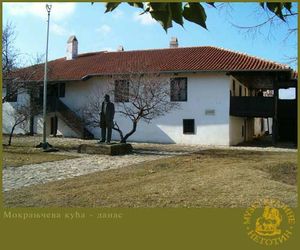Museums
Музеј Крајине
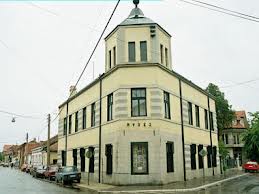
Неготин је тридесетих година двадесетог века био град са 6300 становника, административни, културни и просветни центар Неготинске Крајине. У развоју културе и просвете имао је дугу традицију.
У развоју музејских установа у Србији двадесетог века Неготин је заузимао значајно место. Први музеји комплексног типа у Србији, без Војводине и Београда, основани су у Нишу и Неготину. Правила друштва градског музеја „Хајдук Вељко“ у Неготину усвојена су 14.10.1933. а моравски бан их је потврдио 16.2.1934. године.
У групу најзаслужнијих Неготинаца, која је основала музеј спадају Петар Типа-школски инспектор (председник Управног одбора музеј), Милан Радојевић-учитељ, Стојан Младеновић-професор (први управник музеја), Светислав Стевановић-банкарски чиновник, Димитрије Богдановић-срески начелник, Петар Тодоровић-директор Учитељске школе, Драгутин Цветковић-директор гимназије, Илија Симић-директор основне школе, др. Мирослав Силвић, Милован Лапчевић-школски надзорник, Жика Ристић-чиновник, Славко Милојковић-учитељ и др. Александар Тооровић.
Музеј је у почетку радио у скормним условима, Музејски предмети били су смештени у две просторије. У једној су били предмети из археологије, етнологије и природњачка збирка, а у другој документа, литература, фотографије, слике и други материјал, који се односио на Неготин и Крајину. Све до половине двадесетог века музеј није имао кустосе.Музеј је 1952. Године добио зграду трговца Душана Јотића, што је био бољи и већи простор за музејске збирке. Све више се увећавао број експоната, а отворена су и два нова музејска објекта: Родна кућа Стевана Стојановића Мокрањца отворена је 1964, а у конаку кнеза Тодора 1997. отворена је сталан поставка посвећена Хајдук Вељку.
Музејске поставке и локалитети имају велики значај, како за културну баштину овога краја тако и за националну баштину.
МУЗЕЈ ХАЈДУК ВЕЉКА
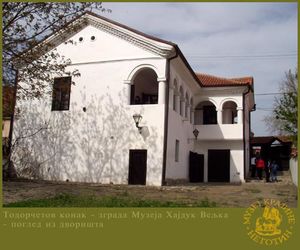
Музеј је смештен у конаку кнеза Тодора. Поставка је посвећена јунаку из времена првог српског устанка, Хајдук Вељку.
Изложена су уметничка дела инспирисана Хајдук Вељком, оружје и барјаци из првог српског устанка, фотографије и документа о ратовању.
Етнолошки експонати у оџаклији илуструју градску кућу из деветнаестог века.
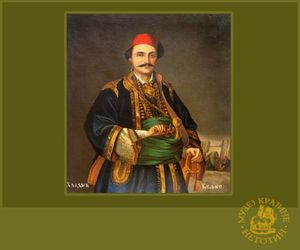
Хајдук Вељко Петровић (1780-1813)
Veljko was borned in Lenovac, a village nearly Zajecar. Already in 1803, he becomed brigand, together with Stanoje Glavas. Veljko was later married with Stanoje’s relative, and had two children. At the beginning of the First Serbian Revolt, Veljko was together with Stanoje Glavas, Djusa and Vujica Vulicevic. With permission of the Sovjets, in 1807, he raises revolt in his native town, Crna Reka. Veljko’s courage and heroism, made him one of the greatest Serbian heroes, and already during his life he becomed the legend. Karadjordje named him for a duke of Krajina, where he was killed while he was diffending Krajina from Turks.
Veljko Petrovic, duke of the Krajina, was defending east border of the Serbia, and assuring the peace in the Krajina. He fortificated the town.
After the peace agreement was established in Bukurest (1812), the Russia finished the war against Turkey, and international status of Serbia become more complicated. The war between Turkey and Serbia became reality, because Serbs refused to accept the Turks ultimatum. Turks wanted that status of Serbia be the same as it was before the revolt, and Serbs refused that.
After the first conflicts with Turks at the beginning of 1813, Veljko with cavalry get to the Vidin and confiscate a lot of livestock. However, Turks were already prepeared attack on Krajina. In July in 1813, came to the first big , and Hajduk Veljko beat one part of Turks military. After three days the big Turkey military was crossed the river Timok and went to the Negotin.
Veljko was definding fortifited Negotin with 3000 soldiers, against 16000 Turks soldiers for days. Every day Veljko was fighting with Turks, and he showed great currage and bravery, but outnumbering Turkish army manages to sustain and carefully close to the fortificated Negotin. Siege for days totally exhausted Veljko’s army, ammunition was in the end, and help was not arriving. During this time Turks were continually with canons beating the fortifications of Negotin.
The nineteenth day of defence, 18th July in 1813, Hajduk Veljko was killed on Abrasev retrenchment, while he was encourage his soldiers to endure. One cannonball completes the life of Veljko. In vain, his nearest soldiers were hiding his death. The army very fast feeled that Hajduk Veljko was killed. And over the night, his army fled to the Porec. His life motto remain: Giving head, but not Krajina.
МОКРАЊЧЕВА КУЋА
Музејска поставка састоји се из два дела. У приземљу куће налази се поставка Стане Ђурић Клајн посвећена композиторовом духовном и световном стваралаштву, са музиколошком анализом.
На спрату је етнолошка поставка са оригиналним предметима, фотографијама и документима из живота и рада Стевана Мокрањца.
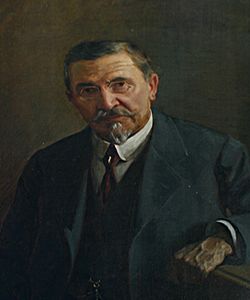
Stevan Mokranjac (1856-1914)
The most important and the most famous Serbian composer ever. He was borned in Negotin in east Serbia, and longest part of his life, he lived in Belgrade. He died as the refugie in Skoplje, when the First World War began. Young Mokranjac was during regular educating in Negotin, Zajecar and Belgrade, could only to recive little part of music education. However, he had the opportunity to listen traditional singing and Church singing, then still very alive in the oral tradition.
Gimnasium education didn’t help him a lot to get music education. With a support and assistance of First Belgrade Singers Society and the state scholarship, he began music studies in Munich (1879), and continued and finished them in Leipzig and Rome. Upon his return to Belgrade (1887), now as educated musician, he becomed conductor of the Church choir Kornelije Stankovic and of the First Belgrade Singers Society.
For the First Belgrade Singers Society, which was under his menagment wrote the golden pages of Society history, he will be related all his life, as conductor and composer.
As a composer Mokranjac was consistently cultivating national and traditional music stile. This music stile was created in Serbia at the half of XIX century, and Kornelije Stankovic started it. With equal entusiasam he worked in the field of folk and in the field of church music. He realistically comprehends the situation in Belgrade and in Serbia, and opted for the choral “a cappella” creativity.
To Church singing he was dedicated for all of his life. As child, he was listening and learning this music in the Negotin’s Church. He was recording this music for more than a decade, and result of this ware three comprehensive books with notning results. Based on the traditional melodic, he was writing a spiritual choral music to the end of the life. He wrote: fifteen Rukovets, liturgy of St. Jovan Zlatousti.


